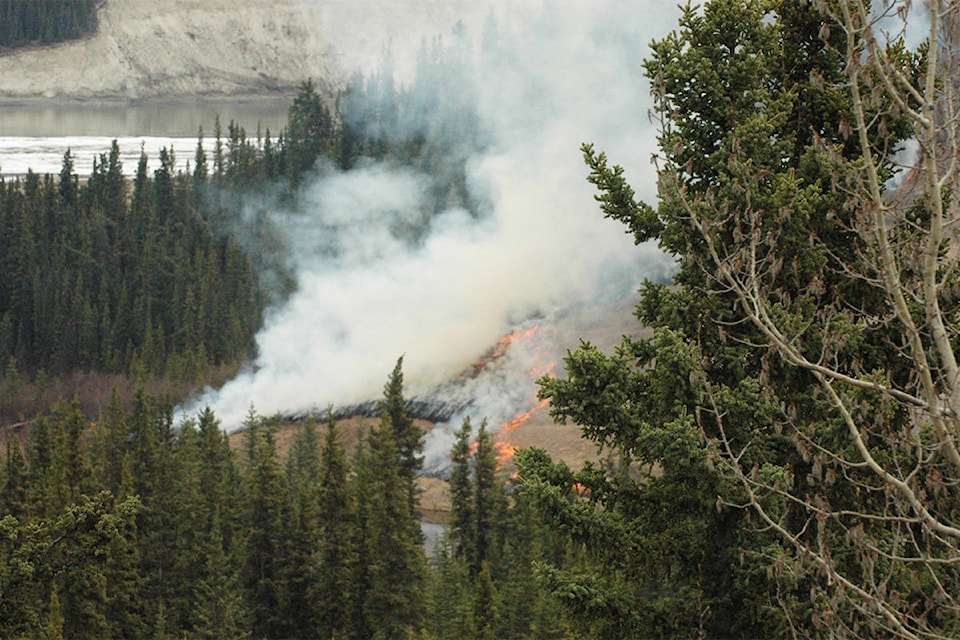A pair of prescribed burns aimed at reducing the risk of wildfire were visible from Whitehorse neighbourhoods on May 11 and 12. The burns are part of organized risk reduction work taking place around the city in an effort to remove fuel that could allow a fire to spread.
“Prescribed fire is a strategic way of using fire under specific conditions to reduce wildfire risk. By removing material that potential uncontrolled wildfires could burn, areas treated this way help firefighters suppress the fire,” the government notice states.
Work took place north of the Takhini neighbourhood on Tuesday, May 11 and east of Range Road near the old landfill the following day.
Fire information officer Julia Duchesne said the work at Range Road and Takhini is part of a project which will continue through the spring. Last week, portions of Long Lake Road and an area across the river from Whistle Bend had fuel management done.
Duchesne said areas around Whitehorse are selected for fuel management based on several criteria, the most important being the flammability of the forest fuel on site. Dead grass left behind between the snowmelt and new spring growth is a common target of controlled burns. Duchesne said large swathes of dead grass are identified and managed using controlled fires in partnership with Whitehorse Fire Department crews.
Along with the prescribed burns, which might attract the attention of nearby residents, Duchesne said multi-year forest fuel removal projects are also ongoing around Whitehorse. She said fuel breaks are created either by removing vegetation entirely or by taking out coniferous trees and leaving behind the more fire-resistant species like aspens. She noted that this type of project was started near Whitehorse in 2019 and has been in use in the Haines Junction area since at least 2013.
Along the Copper Haul Road south of Whitehorse, Duchesne said all conifers near the road were removed this year; in 2022 the area will be replanted with aspen seedlings, eventually growing into a more fire-resistant forest. She said roads and other existing fuel breaks are chosen as the sites of this kind of work in order to make them a more effective barrier against wildfire.
As part of Whitehorse’s wildfire risk reduction strategy, Duchesne said a large fire break is under construction between Mount Sima and Mary Lake south of the city.
Along with the work near Whitehorse, Duchesne said there is a robust program to assist wildfire protection activities in other communities across the territory. While the Yukon Government’s Firesmart program has been in place since 1998, Duchesne said it it is picking up steam. In the past year, the government has funded 42 projects involving the removal of potentially dangerous forest fuels near communities costing a total of $1.17 Million.
She added that the communities of Teslin, Dawson, Mayo, Carmacks, Haines Junction and Watson Lake are in the process of developing community wildfire protection plans to guide fuel removal and other wildfire protection work in the future.
Along with the community-level Firesmart projects, Duchesne said efforts are being made to identify and support local Firesmart representatives who can help their neighbours take steps to make their properties more resistant to wildfire.
Contact Jim Elliot at jim.elliot@yukon-news.com
